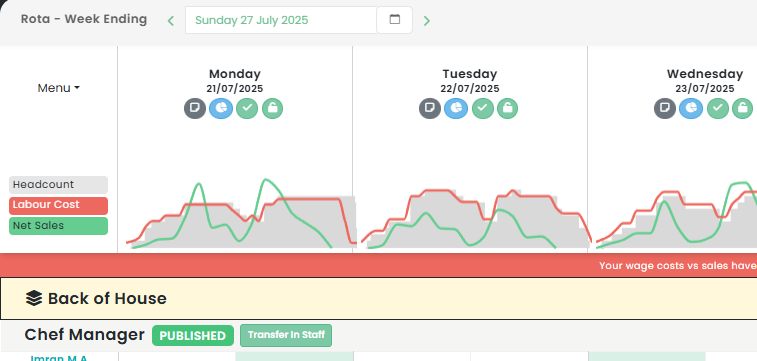Distributing Tips in the UK
Stay informed with industry news, tips, and practical guides for hospitality professionals.

Changing Tip Allocation Laws
Hospitality is a dynamic industry, and yet more change is on the horizon for the owners and management of hospitality businesses.
New plans for laws surrounding the distribution of tips and service charge are being finalised. Simply put, these changes will mean that 100% of tips given by customers must go to staff. These can no longer be kept by business owners or management.
This article will give you information on the changes you can expect and set out some informal advice for hospitality business owners to meet the expectations set by the incoming legislation.
How do restaurant customers feel about this change?
Perhaps the new legislation opens up a chance for hospitality businesses to reinforce trust with both their employees and their guests, as it appears that consumers will be more comfortable knowing that their tips and service charge will be going to the people they wish to receive it.
This is even more valid with the preference for cashless payment methods increasing! A recent survey by YouGov outlines that 64% of people feel less confident that staff will receive a cashless tip – meaning that they often choose to request the removal of service charge completely, or actively choose to tip in cash instead.

What does this all mean for employers?
Many businesses will need to make changes to their distribution of tips and service charge going forward – with 100% of tips now needing to go to staff. But in addition to this, a clear written policy and good clear records of tip and service charge allocation are now necessary.

What is the best way to distribute tips?
There are a few different methods you could use for the distribution of tips, a conversation with your restaurant management and your staff may be necessary to decide on which one is the best fit for your business.
Tip Pooling
Simply put, all tip money can be “pooled” in a “pot” and divided out to staff members. The decision on how to allocate tips from this central pot is made by the troncmaster. There are a few different methods for distributing tips from this pot, two of these will be outlined below.
Evens
You could divide the pot by all staff evenly regardless of position, department or job role.
By Department
You could divide the pot by section / department and allocate different proportions of the pot to each group. For example, one group could be your bar staff and one group could be your kitchen staff.

Employers will need a clear tip allocation policy.
Once you have decided on the appropriate method of sharing tips, you will need to create a clear written policy regarding tip distribution.
Under the new legislation, it will be vital that staff are able to access this.
Employers will need to keep tip allocation records.
As well as a clear written policy on tip distribution, you will need to keep records of tip payments. This is because employees will now have the right to request your tip distribution records and can bring this to an employment tribunal if they believe that the Code of Practice has been broken.
How can Opsyte help?
Opsyte has a Tronc module which allows you to set up a framework for Tip and Service charge allocation. Your tronc payments each month will be automatically calculated based on your approved hours, and your tip and service charge values are automatically collected through till integrations.
Take the extra admin out of the changing legislation by investing in great software for your business.
Also, try checking out our partners at Troncbox!
Ready to simplify hospitality ops?
We’ve got you.
Speak with an Opsyte expert to see how we help:
- Save hours on staff scheduling and rota planning
- Automate invoice processing and financial insights
- Track live labour costs vs sales in real-time
- Get fast answers and support from real humans
- Automate your P&Ls

“Opsyte transformed our entire back office. Game changer.”
Read articles from our hospitality experts
-
Exploring the QSR Restaurant: A Comprehensive Insight into the Fast Food Industry and Quick Service Dining Trends
What is a QSR Restaurant?Within the bustling UK hospitality sector, the Quick Service Restaurant (QSR) business has carved out a significant niche. As the name suggests, a QSR restaurant, also…...
-
Utilising Unique Bar Events and Pub Nights Ideas: Unleashing Creativity in Hospitality Events and Nightlife Promotions for Successful Bar Nights
Ideas for Pub Nights: A Comprehensive Guide to Unique and Exciting Hospitality EventsWhen it comes to the hospitality industry in the UK, particularly bars and pubs, creating engaging and fun…...
-
Maximising Efficiency in the Food Industry: The Comprehensive Guide to Restaurant Catering Software and Other Technological Solutions for Your Business
Unlocking Efficiency in Catering: The Need for Restaurant Catering SoftwareIn today's highly competitive UK hospitality landscape, efficiency and precision are paramount. With the increasing demand for seamless food service, restaurant…...
-
Boost Your Pub Business: Comprehensive Guide on Digital Marketing and Customer Engagement in the Hospitality Industry
Expert Strategies for Marketing Pubs in the UK Hospitality IndustryThe UK hospitality industry, particularly the pub sector, has witnessed tremendous changes over the years. Amidst this evolution, the importance of…...
-
Optimising Hospitality Industry Efficiency: The Comprehensive Guide to Staff Scheduling Software for Streamlined Rosters, Labor Cost Control, and Enhanced Employee Productivity
Optimise Your Hospitality Business with Staff Scheduling SoftwareIn the dynamic world of the hospitality industry, efficiency and productivity are critical factors that can determine the success of your business. This…...
-
Maximising Restaurant Productivity: Harnessing the Power of Online Restaurant Scheduling Software and Other Digital Management Tools
Revolutionising UK Hospitality with Online Restaurant Scheduling SoftwareThe UK hospitality industry is an ever-evolving landscape, continuously adapting to new trends, customer behaviours, and technological advancements. One such revolutionary trend...
